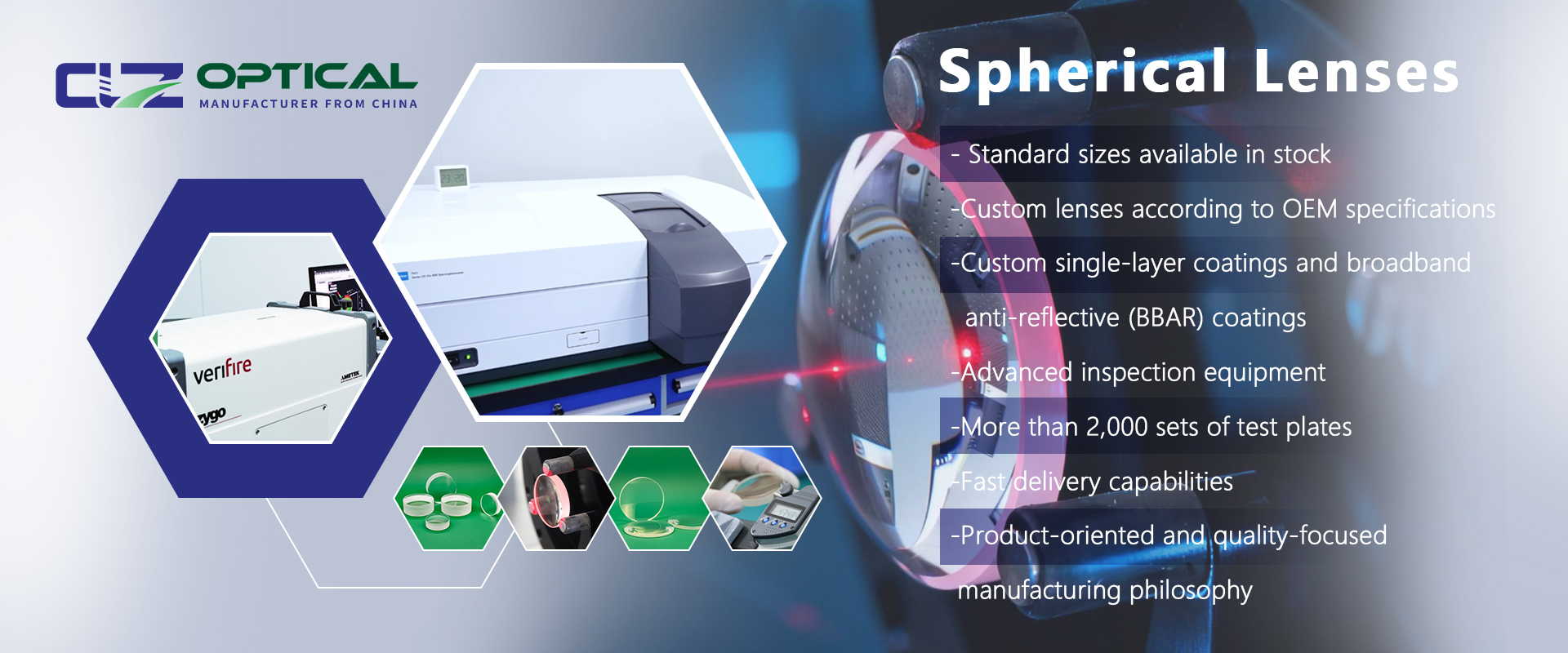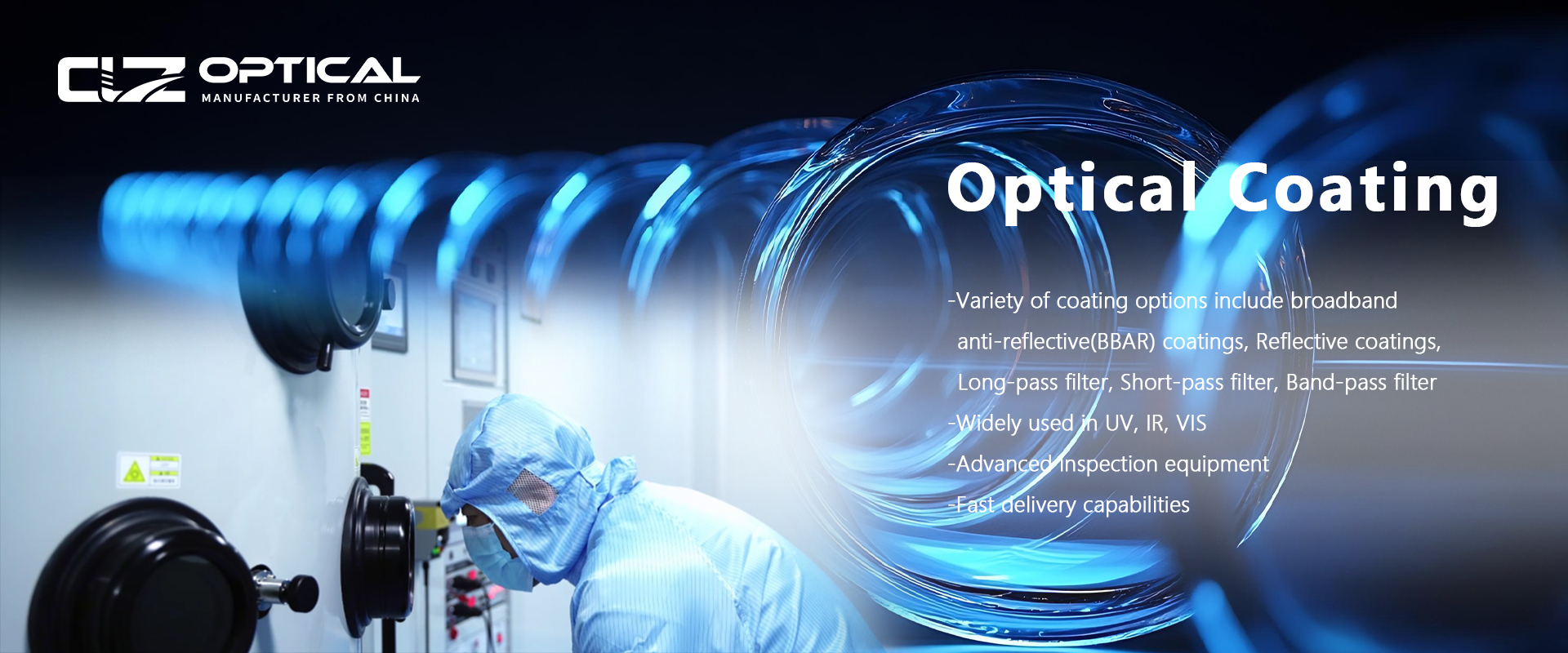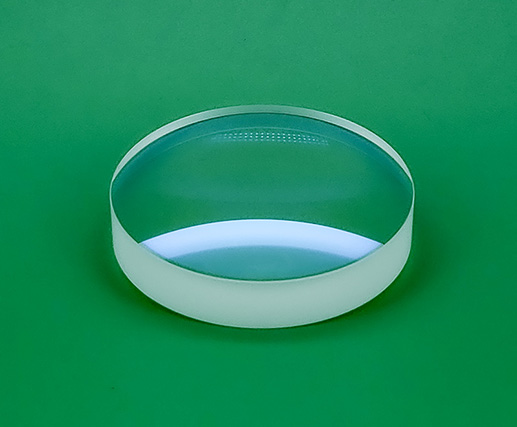Single wavelength AR coating (V-coating)
Single wavelength AR coating (V-coating)
Single-wavelength AR coating (V-coating) is designed for specific laser wavelengths, achieving near-zero reflectivity and ultimate anti-reflection effects in the target band through a multilayer dielectric coating stack. Its core value lies in minimizing reflection loss at the designated wavelength (typically below standard values) while maintaining transmission stability in adjacent bands.
Cross-Domain Technology Implementation Solutions
High-Power Laser Systems
Industrial laser cutting heads incorporate V-coated optical lenses to suppress reflection loss at specific operating wavelengths, enhancing energy utilization. Fiber laser end caps are coated with single-wavelength AR layers to prevent parasitic oscillations within the resonant cavity. UV laser micromachining equipment employs deep-UV optimized coating stacks to ensure high photon energy transmission efficiency.
Precision Measurement Instruments
Laser interferometer measurement mirrors deploy single-wavelength AR layers to reduce energy loss in the reference path. Atomic clock frequency stabilization systems control probe laser transmission via coatings, improving signal-to-noise ratio for atomic transition signals. Raman spectrometers apply specific Stokes line AR coatings on optical windows to enhance weak scattering signal collection capability.
Communication & Quantum Technology
Fiber amplifier pump combiners utilize V-coating to precisely match the pump laser wavelength. Optical interfaces in quantum key distribution terminals feature single-wavelength AR coatings at 1550nm to reduce single-photon transmission loss. The application of anti irradiation single wavelength film system for space laser communication payload ensures the power stability of interstellar links.
Medical Laser Devices
Internal reflectors in ophthalmic therapeutic lasers are coated with AR film at the surgical wavelength to ensure precise energy delivery to the target tissue. Skin aesthetic devices integrate multi-wavelength beam-splitting modules, utilizing V-coating to isolate stray light from the treatment band. Optical detection windows in flow cytometers apply AR coatings specific to fluorescent excitation wavelengths to improve cell sorting accuracy.
Scientific Research Setups
Magneto-optical trap (MOT) windows in cold atom experiments are coated with AR film at the rubidium atomic transition wavelength to enhance laser focusing cooling efficiency. High-harmonic generation setups employ extreme ultraviolet (EUV) single-wavelength AR lenses to optimize attosecond pulse yield. Terminal mirrors in gravitational wave detection interferometers are deployed with low thermal noise single-wavelength coating layers to maintain interferometric signal stability.
Industrial Sensing & Inspection
Laser radar receiver lenses apply dedicated AR layers for the detection wavelength to improve weak echo signal acquisition capability. Semiconductor defect inspection systems integrate V-coated objective lenses to guarantee imaging contrast at specific illumination wavelengths. Optical gas cells in gas analysis sensors are coated with AR film at absorption line wavelengths to enhance characteristic spectral identification sensitivity.





















